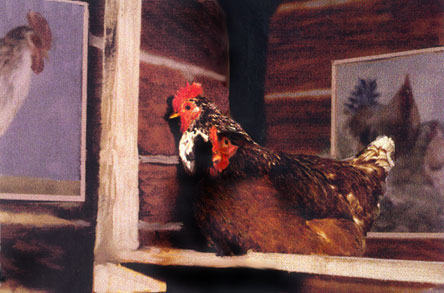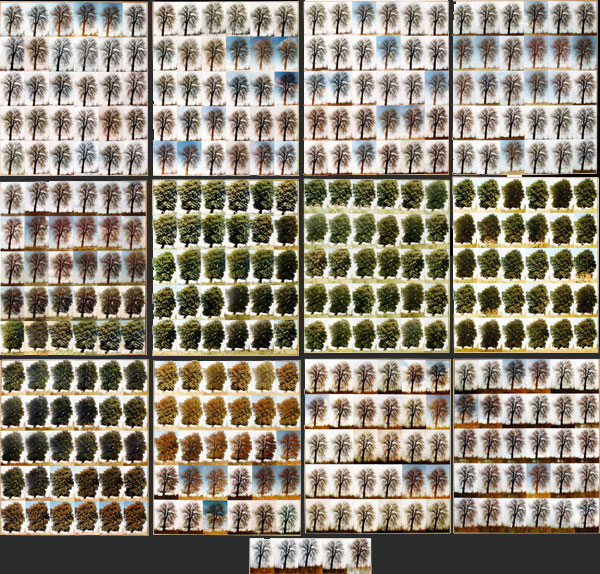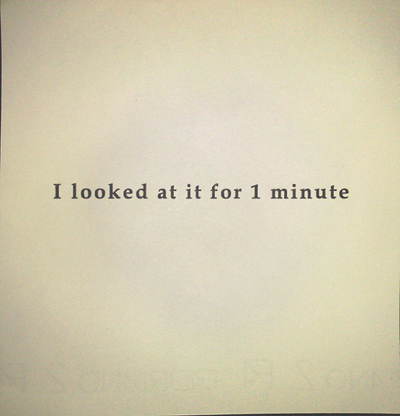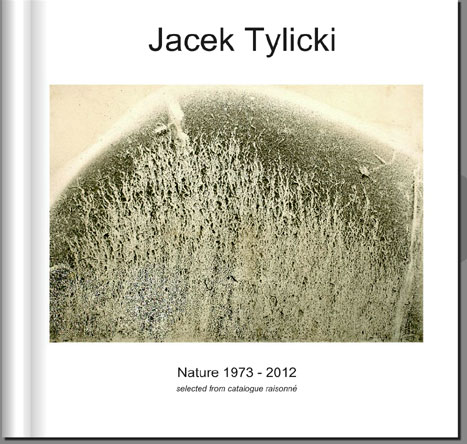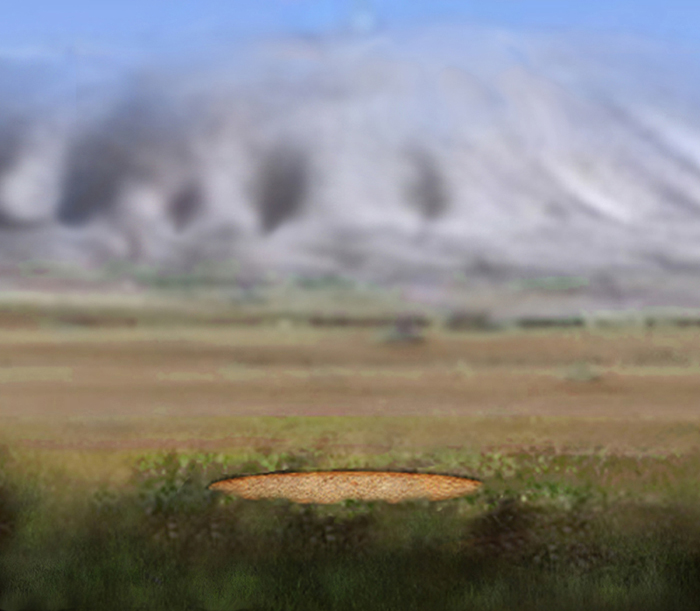Jacek Tylicki
| "Art happens all the time, everywhere. All we have to do is to keep our minds open" |
| Jacek Tylicki |
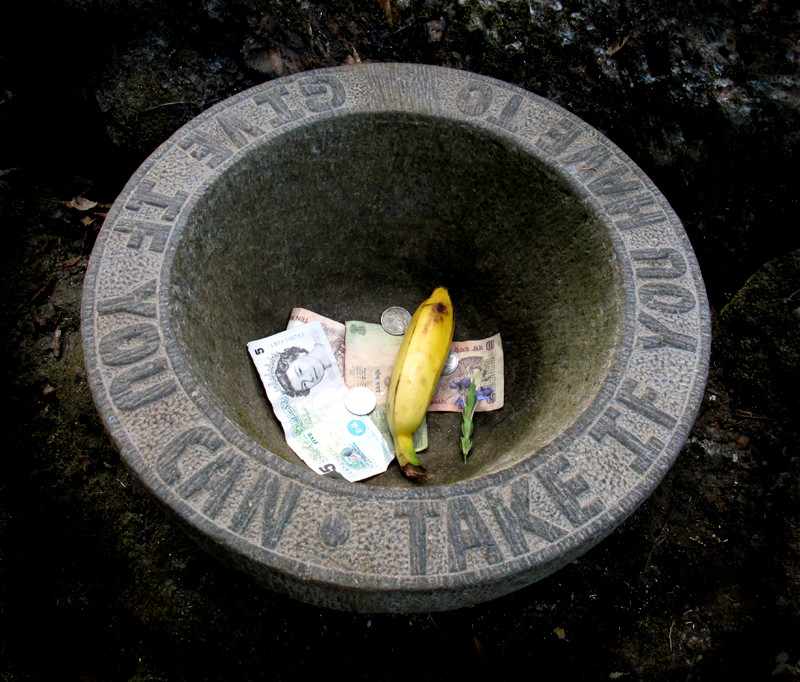
|
|
|
Tylicki
sends into the wind, the rivers or the
forests sheets of canvas or paper, and
leaves them for a
long
while in a natural environment, thus
forcing upon Nature an attitude
previously
reserved to the artist: the creation of
forms.
Leszek
Brogowski
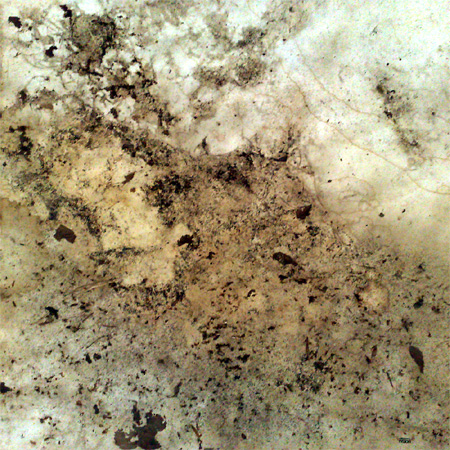 click for full resolution Nature No. 1 4 days in the grass of the meadow. S.W. of Lund. Sweden.16/07 - 20/07 1973 460 X 460 mm. Watercolor paper. (The online catalogue is currently being updated. Over 900 natural art works from 1973 to 2014 will be catalogued shortly). For printed catalogue look here As nature leaves its tracks on both sides of the canvas or paper, each piece can be viewed from all angles. View all angles of Nature number 213 The documentary film
"Natural Art" by Carlos
Leal (1974).
|
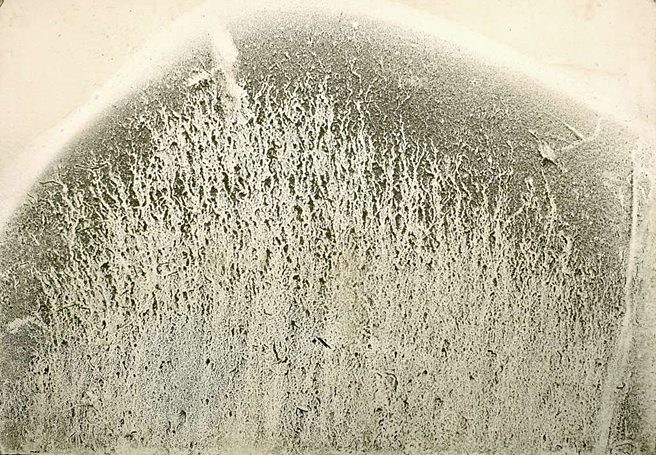
click for full resolution
Nature No. 81
3 days on the bank of Hoje river. S.W. of Lund. Sweden.
727 x 507 mm. Museum board.
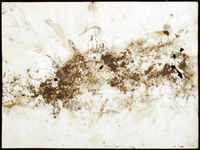 click for full resolution No. 245 14 days on the sandy meadow. S.W. Sweden. 29/10 - 12/11 1978 47,5 cm x 35,5 cm |
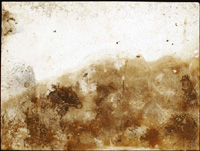 click for full resolution
No. 343 20 days on the forest meadow. Sianowska Huta. Poland. 09/05 - 29/05 1979 47,5 cm x 35,5 cm |
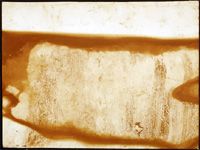 click for full resolution No. 364 17 days on volcanic meadow. Ellidaar, Iceland. 29/06 - 15/07 1979 47,5 cm x 35,5 cm |
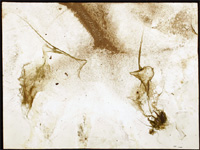 click
for
full resolution
No. 387 9 days in the rushes of the river. Hoje river. S.W. Sweden. 17/09 -26/09 1979 47,5 cm x 35,5 cm |
|
JACEK TYLICKI AND A NEW ETHOS OF ART 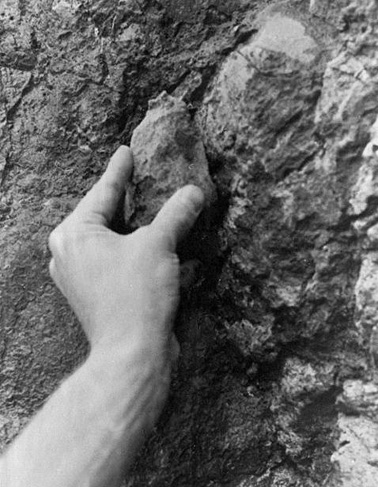 Art originating in the countercultural tradition - a tradition which became epoch-making - introduced some new specific values into the cultural fabric, values to which the creative activity of Jacek Tylicki refers closely. Through his art, Tylicki lays a stress upon personal experience bearing witness to artistic truth; he searches on his own account for an authenticity and a fullness of existence in its relation to Nature, to other human beings, as well as to himself; and maintains a critical suspiciousness towards the ethical and political models of Western society. But the humanism of his art adds to the tradition from which it derives and broadens it due to the dimension of its contemporary concerns, both civilisational (for instance, contesting the predominant ideology of money - Free Art, 1987), as well as artistic (for instance, the work with animals as part of an artistic project - Chicken & Art, 1987). To appreciate the originality of Tylicki's attitude, we have to encompass the entire scope of his artistic activity, which is marked out by three poles: an ecological sensitivity; interactions into the mechanisms of social life - which give his art a political meaning; and finally a certain reflection by the artist on his own situation - such are the horizons of his territory. The essential element is an autoreflection, which leads Tylicki to a certain critique of social egocentricity and adds some new resonance to the term esthetic disinterestedness, a term introduced to esthetics by Kant, and to which many artists have appealed during the XXth century (e.g. Ad Reinhardt ). In so far as the above term is, perhaps, an axis around which his entire art crystallises, so each of his actions is a territory where many different motifs cross, motifs which create his artistic Weltanschauung. "For a chicken the most beatiful is chicken", declares Tylicki in his commentary on the project entilted Chicken & Art. To give this thesis - esthetic? philosophical? - a reality, he transforms The Now Gallery, which he runs in New York, into a henhouse. In the henhouse - as in any henhouse - there are hens and chickens; but because it is now the henhouse-gallery (or maybe the gallery-henhouse...), there are paintings on the walls, paintings which represent, in a style of 'human' realism, a chicken's beauty: the elegant silhouettes, well-shaped plumes, exciting breasts, seductive dressing up in feathers. "To my mind", writes Tylicki "they ought to please the chickens". A sense of humour plays an important part in a life of every sensible human being. It is, first of all, a source of any critical distance from oneself. "It is indeed a sense of humour", writes Alfred Gawronski "towards oneself and one's own tendencies to self-affirmation, that makes for the best preservation of rationality, because it shows us as we are in other people's eyes, and in particular of those who did not succumb to the influence of our dignified seriousness". Is then Chicken & Art a metaphor of our galleries, resembling henhouses, filled with melancholic hens? - for how could one smile with a beak? - creating an irresistible impression that an esthetic delectation, of which they should be the active subject is problematic, especially when regarded from the outside and from a distance, which only became possible thanks to a sense of humour. But a sense of humour has yet another intellectual function: it safeguards us from reducing and flattening problems to such a degree that simplicity becomes banality, but at the same time it reveals all the entangled pomposity within a discourse. In reality, could Chicken & Art even be seen as something quite different, as a metaphor for egocentric human relationships, or else as a disagreement with an exaggerated and misunderstood universalism, which, disregarding Nature, obtrudes its own, devastating order? And even though Jacek writes that "the main motive of realisation of this thought was probably an irritation about the exaggeration of the beauty of the human body", otherwise saying individual and genetic narcissism, none of these interpretational possibilities seems uninteresting. A sense of humour condenses meanings. For a chicken the most beautiful is chicken; certainly. In a fly-world, one can only find things for flies, (wrote J. von Uexkll in Umwelt und Innerwelt in 1909) in a bear-world, only things for bears. Nonetheless, we have to sharpen our question now: is the most beautiful thing for a hen indeed a portrait of a hen? For Jacek has created a situation in which hens can observe and admire one another, but at the same time he obliged them to contemplate the beauty of 'handsome roosters, beautiful hens and pretty young chickens', represented in painter's portraits. Painting is here a source of an essential transposition. But if we make an appeal to Kant's argumentation, where the esthetic experience is the first step to the universal, which means that it is communicated without bringing in ideas, and only because all people have a similar spiritual constitution, we would have to presume that the beauty of these paintings will not be communicable between hens. Therefore, though at first glance one might believe that the essential intention of the installation Chicken & Art was to scoff at 'homocentric' abuses of universalism, we now come to understand that the question of universalism is much more complicated than that, for the project itself imposes on hens the esthetic model built on painting. A hen can sense positive excitment at the sight of a rooster, even if it manages to recognise it as such in a painting, but it won't find arguments to justify the painting as a model of art, and therefore, the beauty of paintings will remain inaccessible for a chicken. Only now can we raise the question of universalism (and its reverse, parochialism) and reflect on the relation of Beauty - what is Beauty? - to this problem. Tylicki himself realises that by doing so, a question is raised about a 'general essence of Beauty'. Where is Beauty? What is beautiful, what is ugly? And who for? From the above questions he comes to a hypothesis, adding however that, "probably: for a chicken the most beautiful is chicken ". Certainly. Nonetheless, the artists who portrayed chickens with Tylicki (the very kitsch-like style of these paintings is an esthetic sense of humour, a nod and a wink, which opens a distance in a relation to ourselves - but is it really a matter of beauty?), became very moved by the hens' beauty. Indeed, only a human is capable of having a universal view, rising somehow above the local particularities; only a human can take into consideration different points of view. As such, Chicken & Art is a criticism of a certain type of an egocentrism, but equally an open invitation to a reflection upon the value of - the need for - universalism, to which the totalitarian tendency of imposing one particular model of culture as a predominantly compulsory reference is foreign. A sense of humour proves to be a hidden reflection, pointing in the same gesture to a human egocentrism and capacity of opening, as well as to the limitation of the hen's world. A chicken is condemned to its 'esthetic' parochialism, which it will never be able to overcome. That is why set against this we have a hypothesis, complementary to the one forwarded by Jacek: a hen is insensitive to human beauty, but only to the "chuck-chuck" of a farmer and a "squawk" of a rooster. The event Chicken & Art was also, as Tylicki himself declares it, a reaction against the overexploitation of the beauty of the human body in Western culture; a declaration which should not be taken lightly under the false pretext of the irony inherent in the entire project. For it concerns here the entanglement of Beauty in much larger cultural mechanisms, transcending esthetics, and obliging us today to bring yet a different light to the questions of a definition of Art and a determination of the field of esthetics. The interpretation of Chicken & Art compels to take into consideration a passage from the 'noble' esthetics of Kant, to a 'suspicious' esthetics of a post-Freudian epoch. For what is Beauty, and especialy the beauty of a human body, if not merely the sublimated vehicle for the libido? Such a thesis could be true for a human, as well as a hen, under a condition, however, that one can talk meaningfully about Beauty in the chicken's world. Behind the apparent disinterestedness of esthetic satisfaction lie misdirected, and therefore not conscious, dark powers such as the erotic drive (or driving off...), a Nietzschean affirmation of the will or a psychoanalytical mechanism of substitutional realisation. If then Beauty in general is, for Freud, a camouflage of the libido, then the esthetics focussed upon the beauty of the human body becomes now quite openly the wrapper of an ideology - such is the argument of Anti-Oedipus - an ideology whose contents shall be revealed. In their brilliant psychoanalysis of Psychoanalysis, Gilles Deleuze and Felix Guattari in fact drew attention to the ideological aspect of psychoanalytic theory itself. Their criticism of a restrictive culture showed that it served precisely as a pretext for liberal ideology, free market capital and the law of survival of the fittest. In a sense, a psychoanalytical unmasking of dis-interest-edness, which is such an important point for the esthetics of Kant, and which psychoalalysis 'suspects' of an erotic 'interest', or otherwise put - the psychoanalytical thesis of a libidinal foundation of any creative activity - goes hand in hand with the principle of free profit in a field of liberal economy. And if we refuse to accept the principle of profit - regarding it as unjustified, groundless, or even inadmissible in a matter of art, without mentioning human relations, then we have to consequently keep a distance from the psychoanalytical suspicions of any hidden eroticism and the unconsious 'will to power' in all attempts at invoking disinterestedness. For it is not without reason that the French philosopher Alain (Emile Chartier) called psychoanalysis 'monkey psychology'.
Is it true that a human being is a machine guided by a logic of cause and effect only or, worse still, of income and expenditure? Tylicki's project Free Art (Now Gallery, 1987), where the free distribution of the works of well established New York artists (Mark Kostabi, Rodney Allan Greenblat, Kenny Sharf, FA-Q, and others) puts in doubt not only the capital parity character of an object of art, but more than that - the commercial principle of profit in an exchange of articles, and reassures us in a belief that our interpretation did not take us away from the original intentions and the reflections of the author himself. It is important neither to disdain, nor dramatise an ever-recurrent Baudelaire-like motif of the poet who sells himself, hawking his poems to the bourgeois press, but rather to raise anew a question of Art's place in society. Tylicki approaches this question in a double way, trying to see an artist as independent from the sale of his work, making the art take place inside the economic mechanisms but without the mediation of objects as works of art (Business as Art) and at the same time, to free the objects of art from the market's encroachment (Free Art). An independent artist and a liberated art - art which, depending of its attitude, will become then a game (Business as Art, from 1986 on ), or a gift (Free Art). Against the now predominant ideology of Capital, which likes to consider itself as a non-ideology, but simply a common sense point of view from the epoch of the end of ideologies, in this last show, Jacek makes an appeal to an institution, existing (still existing, fortunately) in our culture of giving and gifts. As early as 1923, in his famous Essai sur le don, the French sociologist Marcel Mauss decided that gifts necessitate a new philosophical analysis. It is true that societies are animated by the movement of an exchange between the groups that compose them. Examining the reasons that bring a human, or sometimes entire groups of humans, to present someone with a gift, and for others to give something in return, Mauss proved that such an exchange can not be reduced to a commercial activity following the profit principle. An exchange consists in a union : "Souls are uniting with Things" - he wrote - "Things are uniting with Souls. Lives mix (...): that is the contract of an exchange". And one can exchange not only objects, but equally services, dances, rituals, festivities, women, children, names... Let us then exchange Art. Free Art is a challenge: Art can be a gift, Art is a gift, Art as a gift. So if the economists neglected a holistic reflection on the phenomenon of exchange, reducing it to the principle of economic profit, then maybe it will fall specificaly to Art to initiate such reflection in a different way. In so far as Mauss demonstrated that some forms of social life organised around principles which were the negation of the economic principle of profit could indeed exist, so, beginning from the end of the sixties on, the spirit of voluntary exchange between artists animates the activities of a network and Mail Art, and is, to quite a remarkable degree, also present in the production of fanzines, samizdats and books by different artists. Very recently, Jean Starobinski, while organizing the exhibition Largesse (1984) in the Louvre, pointed - more generally - to the meaning of the theme and the problematic of gifts in the History of Art. The essence of Tylicki's Free Art is not the gift as a work of art given by such and such an artist, but a paving of the way for Art's different, utopian circulation in society, and the creation of a new or maybe simply forgotten type of exchange in Art, that could embrace perhaps not only objects, but also thoughts, everyday gestures, games, beauty, events, and maybe even names... precisely, the action known as Free Art was organized by Jacek Tylicki as an Anonymous Artist, even though the work given to the audience was produced by known artists. Beginning with the fanzines published in Sweden in the seventies under just that title, Anonymous Artist is a welding material for the whole series of Jacek's projects. The point is precisely to avoid, even to overthrow, a certain egocentrism, connected with the transfer, evident in the modern world, of the accent away from the work of an artist onto the artist himself, and engendering here the phenomenon of 'stardom'. When Benjamin's 'aura' disappears "we do not admire works of art any more, but artists only", as Rgis Debray - not without reason - remarks. Anonymity means the autolimitation of the author's rights, which is one of the forms of property rights. Politically speaking it is a refusal of the principle of capitalisation of a value attached to the name of the artist; esthetically speaking - it is an attempt to cut short one's own greed of owning. Taking a critical distance from the myth of the artist and the social mechanisms of artistic careers, the accent is placed once again on the essential aspect of creative work and it is in this way that Tylicki's conception lays stress on the artist's own responsibility for his art. But Art is not only a produced object; the paradigm of Art does not consist solely in regard to the means of existence of the work itself, but equally in regard to the use that is made of it - as a gift or an article. The entire activity of Jacek in the field of art is an attempt to find a normal human answer in a world which tends to be more and more inhuman. It is a naive magnanimity as opposed to cynicism, abolishing an egoisticgreed through disinterestedness; it is a proposal instead of a deconstruction, a gift trying to undermine the principle of profit. Disinterestedness seems to be something utterly naive and ridiculous in these times, when charity work has become a business, and the libido has ceased to be a taboo to such a degree that it looks as if we are going to have a turnaround in theology, which will be forced to give up the doctrine of angels as incorporeal beings - and therefore sexeless as well - and to grant them young, shapely, girlish bodies, thus alloting the angels in this way some new tasks in their mediation between Western man and God. Art, such as that being practiced by Tylicki is Applied Philosophy, is philosophising by means of objects, events, actions, photographs, etc., it is a philosophy made manifest as the reality of Art; that's probably why Jacek himself happily speaks of the idea being the essence of art. The art that he himself practices is related to a certain existential attestation, the sense of which we now could try to specify a little more precisely, since we have made clear that the practice of disinterestedness in a world ruled by the principle - of profit and accepting a liberation of the sexual drive as a condition of freedom - brings with itself a certain risk of becoming something of a laughing-stock. Facing this fear of making oneself ridiculous expresses here a fidelity to certain values, for a dis-interest-ed interest in the beauty of hens, and a beauty for hens expresses a more general attitude - clearly present also in many of other Jacek's projects - it is a certain return of the interest of art - although on a new basis - in Nature. One such project is, for instance, Natural Art still originating directly from traditional painting experiments, carried out during his painting studies, which brought Tylicki, in the first half of the seventies, to a certain conception of the painter's abstraction, a conception which can be considered as coherent and satisfying, which is perhaps the exact reason for its limitation. A consciousness that such exercises can be developed into a numerically infinite series of esthetically fulfilling paintings was a consciousness of an achieved limit, which was not negated by the success that Tylicki's creations met in the gallery. Mastery within this conception threatened painting by transforming the creative space into a deadly routine at a more or less adequate standard. To overstep this limit only became possible by changing the painting paradigm. From this reflection was born Natural Art. 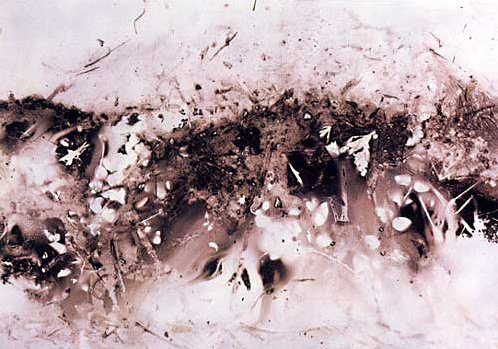 How then to liberate a lyrical painting abstraction from extreme subjectivity? While raising the above question, Tylicki meets one of the predominant tendencies of the XXth Century avant garde, which is a certain pursuit of objectivity in an artistic creation. It is one answer of Art to the ethical question and it will later metamorphose, in his work, into a conception of the anonymous action of an artist. In answer to this, beginning in 1973, Tylicki sends into the wind, the rivers or the forests sheets of canvas or paper, and leaves them for a long while in a natural environment , thus forcing upon Nature an attitude previously reserved to the artist: the creation of a form. The finding of a form and its realisation. An artist imposes a principle and geographical frames of action; Nature creates the forms. In so far as Kant defined genius as an "inborn disposition of mind (ingenium), by means of which Nature establishes the rules for Art", then in Natural Art the mediation of an artist-genius became unnecessary, because Nature itself - directly, without his participation - revealed its capacity to dictate the canons of Beauty to Art. In fact, the esthetic production of Nature oriented in such a way proved to be something fascinating, spreading out to infinity in its differentiation and in the wealth and scale of its formal invention - a fineness of colourful, sublime compositions, a laying out of detail, a way of handling light and shade, the creation of intriguing and indescribable ambiances, etc. Theologists would say that the project borrowed principles of creating forms from Creation itself. This is at least one possibility of considering Beauty outside of any libidinal dimension; and, what's more, not as a 'beautiful landscape' or a 'beautiful flower', but as a beauty rationally connected with an artistic project. As such, Tylicki puts in work, la lettre, a postulate of Paul Klee, who expected an artist not so much to imitate Nature's forms, but to get closer to these forms by way of creative procedures, realized by Nature itself. An alliance with Nature has became an element of modern attempts to determine a new meaning of the word 'humanism', whose content has been sanctified by tradition, but also put in doubt by the harsh realities of the modern world, as well as by the human sciences surveying epistemological honesty. Trying to keep a 'partnership' style relation with Nature, instead of domination, stressing the autonomous values of Art in place of its commercial value - of a career and a profit, the adoption of an anonymous version of artistic creation rather than of an exaltation of the myth of the artist - these are the motives of the artistic choices of Jacek Tylicki, which consequently come together in a certain conception of disinterestedness. This convergence establishes the coherence of his apprehension of the world, which he constructs by means of the language of his art. An attempt to remplace, in Free Art , the economic principle of profit by a gift, found its complement and at the same time a continuation of the same reflection in Chicken & Art, by revealing the intention of separating Beauty from its erotic interpretation, to which it was condemned by Psychoanalysis, and of trying to show its more universal meaning. For the libidinal dimension of Beauty proved to be an element of the same free-competition ideology of money, which Jacek deprecates in many different ways in his other projects, by opposing against it his apprehension of the world, whose center embraces the value of human existence.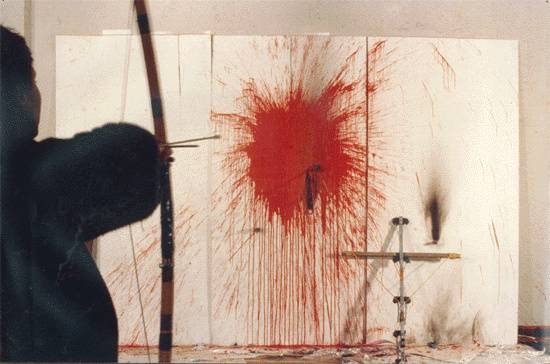
Translation Dorota Czerner-Richardson Bibliography:
A.Gawronski, Why did Plato exclude the poets from The Republic ? At
the
source of a modern research on language,
Warsaw 1984, p.
36..
The
commentaries to the exhibition, from which we
quote few further
fragments. .
I. Kant, Critique of the
Faculty of Jugement 9. .
The
paintings of hens used for the instalation in
New York executedby:
Dima Sheinman, Denis Pitman and Jacek Tylicki.
.
G.Deleuze,
F.Guattari, Capitalisme et Schisophrnie, t. 1
: L'Anti-Oedipe,
Paris, Ed. de Minuit 1972. .
See Art
&
Auction, June 1987, p. 24, where
Laure
Cottingham gives
a relation of this event : "But I don't try to
remember that (she
obviously forgot about the crowds storming the
gallery). I only know
I've
got a pink Rodney Allen Greenblat Valu-Days.
And it's for sale." .
(in:) Sociologie et
antropologie , Paris 1966, p.173. .
An
illustration of this principle would be, for
instance, a gift,
but also a potlatch such as described
by R.Malinowski. .
Vie
et
mort de l'image. Une histoire du regard en
Occident,
Paris,
Gallimard 1992, p. 63. . Kant, op. citatum, 46
(underlining L.B.). .
P.Klee, Thorie de l'Art
moderne, Paris 1985, p.42 : "in the
game of Art we are imitating the forces which
created and are creating
the world".
Idea
as an aesthetic experience -
tylicki Power to the
Mind -
Tylicki
Wikipedia: Jacek TylickiIdea as an aesthetic experience - tylicki Wikipedia: Land art Wikipedia: Conceptual art Contemporary art now Independent World Report - "The future of fine arts" some events: "Give if you can - Take if you have to" sculpture installation at DUBLIN BIENNIAL 2012. Dublin, Ireland. Video: "White canvas and the forest creek" - Creating of NATURE no. 912. 480 cm X 197 cm. Kashubia, 12/07 - 27/07 - 2013 Look inside and preview some of
the selected pages from the printed
copy of the Catalogue Raisonne. Published by: 21Universe, USA. ISBN: 9780985369200
© 2000 - 2024 tylicki.com |
